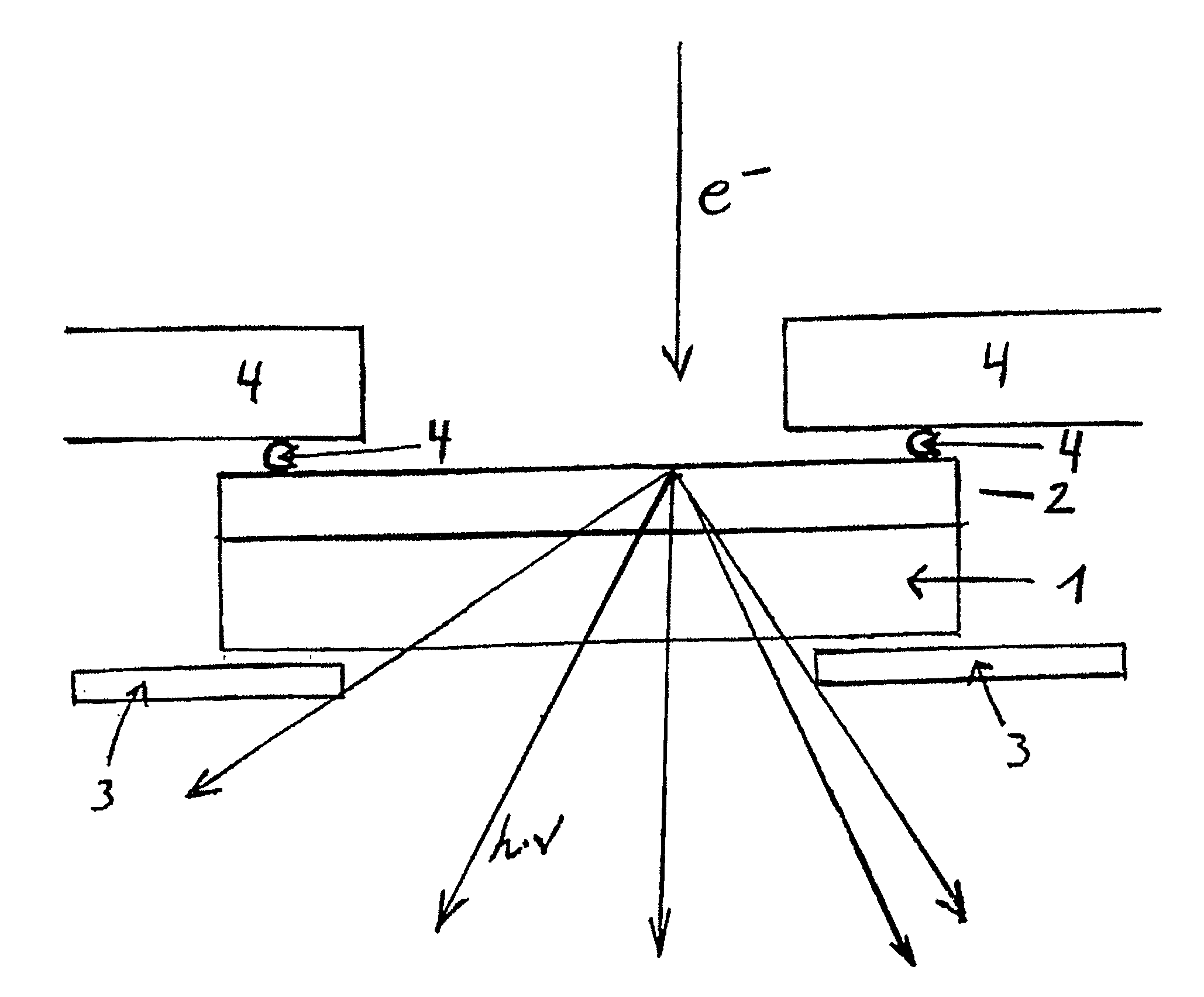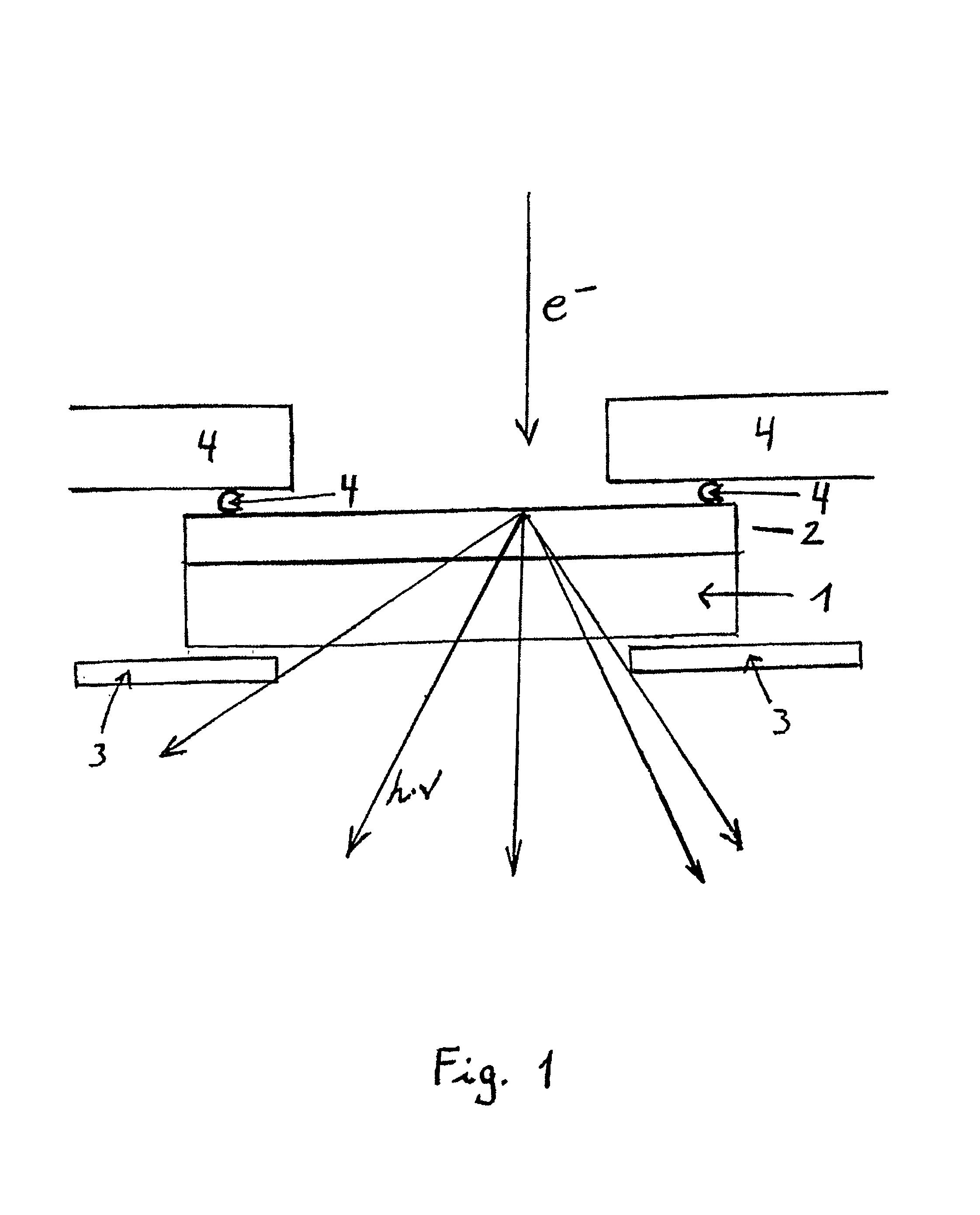X-ray anode and process for its manufacture
a technology of x-ray anode and process, which is applied in the direction of x-ray tube electrode, x-ray tube vessel/container, x-ray tube, etc., can solve the problems of small resolution, difficult to manufacture, and difficult to withstand thin diamond windows
- Summary
- Abstract
- Description
- Claims
- Application Information
AI Technical Summary
Benefits of technology
Problems solved by technology
Method used
Image
Examples
Embodiment Construction
The invention is based on the technical problem of producing an x-ray anode that avoids the disadvantages of the prior art as far as possible. The x-ray anode needs to be harmless from a health viewpoint and, in particular, should make it possible to work with a much smaller focus than with the prior art.
The solution of this technical problem is achieved through an anode material being located on a diamond window. The process-related task of producing such an x-ray anode includes coating an auxiliary layer with a diamond layer by chemical vapor deposition (CVD), and depositing a metallic layer on the diamond layer. Advantageous embodiments are provided in the dependent claims.
According to the invention it was recognized that the problems could be solved by an x-ray anode where the anode material is on a diamond window.
At first, diamond seems unsuitable as a material for a microfocus source. With an atomic number of Z=6, diamond absorbs x-radiation more than beryllium at Z=4. It woul...
PUM
 Login to View More
Login to View More Abstract
Description
Claims
Application Information
 Login to View More
Login to View More - R&D
- Intellectual Property
- Life Sciences
- Materials
- Tech Scout
- Unparalleled Data Quality
- Higher Quality Content
- 60% Fewer Hallucinations
Browse by: Latest US Patents, China's latest patents, Technical Efficacy Thesaurus, Application Domain, Technology Topic, Popular Technical Reports.
© 2025 PatSnap. All rights reserved.Legal|Privacy policy|Modern Slavery Act Transparency Statement|Sitemap|About US| Contact US: help@patsnap.com


